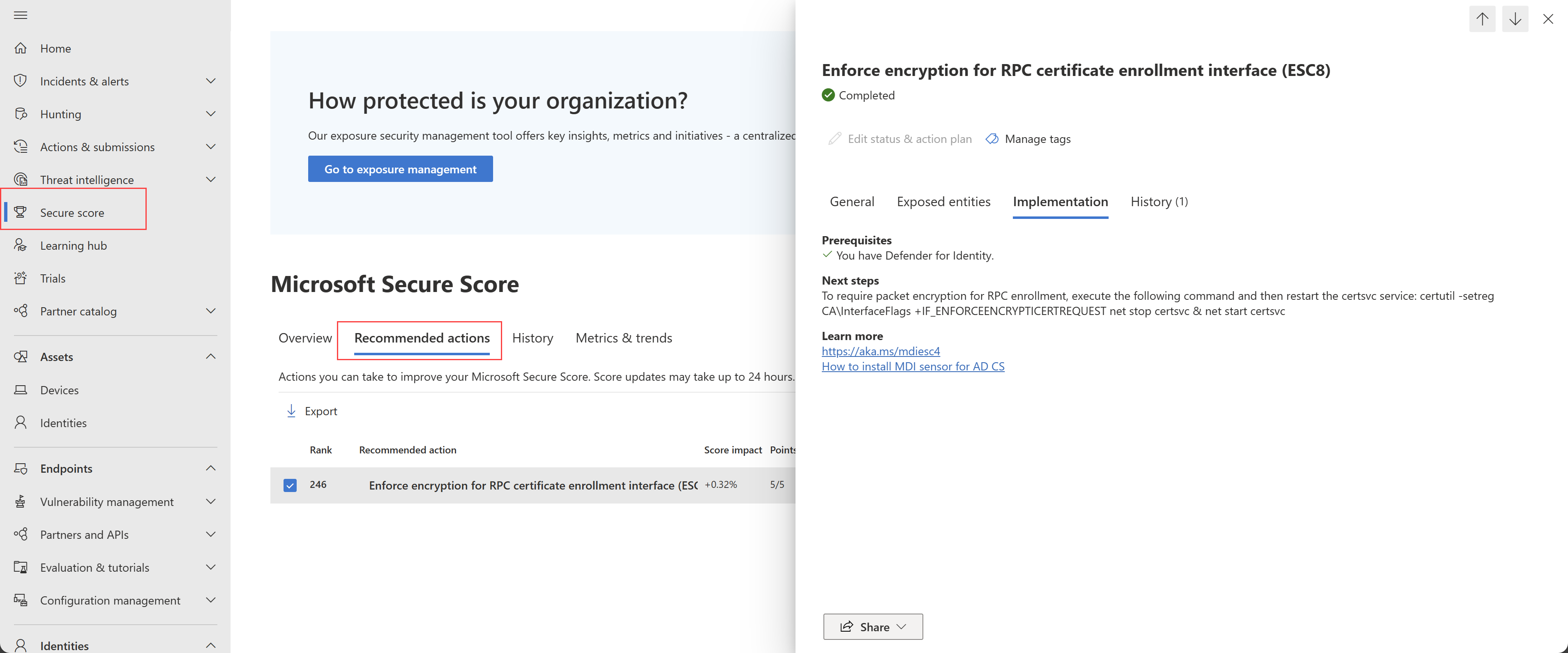Security assessment: Enforce encryption for RPC certificate enrollment interface (ESC11)
This article describes Microsoft Defender for Identity's Enforce encryption for RPC certificate enrollment security posture assessment report.
What is encryption with RPC certificate enrollment?
Active Directory Certificate Services (AD CS) supports certificate enrollment using the RPC protocol, specifically with the MS-ICPR interface. In such cases, the CA settings determine the security settings for the RPC interface, including the requirement for packet privacy.
If the IF_ENFORCEENCRYPTICERTREQUEST flag is turned on, the RPC interface only accepts connections with the RPC_C_AUTHN_LEVEL_PKT_PRIVACY authentication level. This is the highest authentication level, and requires each packet to be signed and encrypted so as to prevent any kind of relay attack. This is similar to SMB Signing in the SMB protocol.
If the RPC enrollment interface doesn't require packet privacy, it becomes vulnerable to relay attacks (ESC11). The IF_ENFORCEENCRYPTICERTREQUEST flag is on by default, but is often turned off to allow clients that can't support the required RPC authentication level, such as clients running Windows XP.
Prerequisites
This assessment is available only to customers who have installed a sensor on an AD CS server. For more information, see New sensor type for Active Directory Certificate Services (AD CS).
How do I use this security assessment to improve my organizational security posture?
Review the recommended action at https://security.microsoft.com/securescore?viewid=actions for enforcing encryption for RPC certificate enrollment. For example:
Research why the
IF_ENFORCEENCRYPTICERTREQUESTflag is turned off.Make sure to turn the
IF_ENFORCEENCRYPTICERTREQUESTflag on to remove the vulnerability.To turn on the flag, run:
certutil -setreg CA\InterfaceFlags +IF_ENFORCEENCRYPTICERTREQUESTTo restart the service, run:
net stop certsvc & net start certsvc
Make sure to test your settings in a controlled environment before turning them on in production.
Note
While assessments are updated in near real time, scores and statuses are updated every 24 hours. While the list of impacted entities is updated within a few minutes of your implementing the recommendations, the status may still take time until it's marked as Completed.
